Scythe Kaze Server: getting ready for the summer
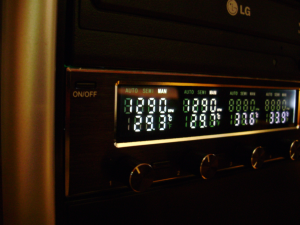 Who now does not dream of a quiet productive system? The theme of lowering the temperature and noise emitted has repeatedly been raised on Habré.
Who now does not dream of a quiet productive system? The theme of lowering the temperature and noise emitted has repeatedly been raised on Habré.With the approach of summer, this topic is becoming increasingly relevant, especially for owners of
If you do not take into account coolers, radiators, etc. a good reobas can also help us in this matter, able to regulate the speed of the fan revolutions based on the readings of the thermal sensors.
')
Walking the shops of the city was not crowned with particular success. Available were only Aerocool, poured with all the colors of the rainbow and Zalman, with prices almost twice the real ones. Of course, one could be given on the search for Zalman at a reasonable price. But here came into view panels from Scythe .
At the time of writing, I found 3 types of Scythe panels for slot 5.25 ":
- Scythe Kaze Master Ace
- Scythe Kaze Server
- Scythe Kaze Master Pro
Kaze Master Ace

If I may say so, the younger model. To be more correct - the first model. The kit has 4 sensors, cables of medium length, a beautiful VFD-display. Among the shortcomings - the lack of cooling radiators.
Kaze Master Pro
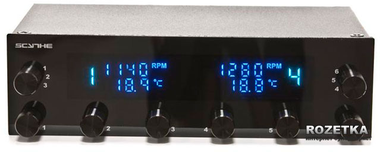
The older model allows you to control 6 fans at the same time. The kit has 2 spare sensors. At the same time can only display data of 2 fans.
Scythe Kaze Server

Average model Unlike Master Ace, it has longer cables, radiators, and a switchable LCD display. It is about her today we talk.
The device was not difficult to buy, in the Ukrainian " Rosette " it was available in stock. It became possible to pick it up for a modest $ 47, taking into account the delivery for 1000 km - the total cost was $ 50.
On the 25th of April, I ordered it in the evening, and at noon on the 27th, the reobas was ready for installation.

Reobas comes in a compact box. Everything is beautifully packaged in a shockproof protective container.
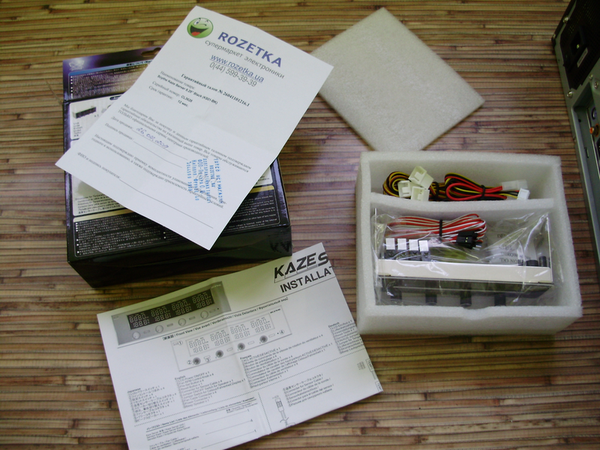
In the box we find:
- reobas himself;
- power cable 1 pc .;
- temperature sensors: 4 pcs. with marking + 2 pcs. spare;
- 4 adapters for connecting coolers;
- 6 fixing labels for attaching sensors;
- 4 screws for fastening the panel;
- manul in the form of a "folding bed", Russian is present;
General characteristics:
- Dimensions (W x H x D): 148.5 x 42.5 x 63 mm
- Display (W x H): 114 x 20 mm
- Power supply: 5 V and 12 V from molex
- Output voltage: 3.7 V (± 10%) ~ 12 V (± 10%)
- Number of channels: 4 (1A per channel)
- Rotation Speed Adjustment Area: 0 - 9990 rpm
- Temperature sensors: 4 (0 - 100 ° C / 32 - 199.9 ° F)
- Weight: 162 gr.
Reobas itself has a protective film on the display:
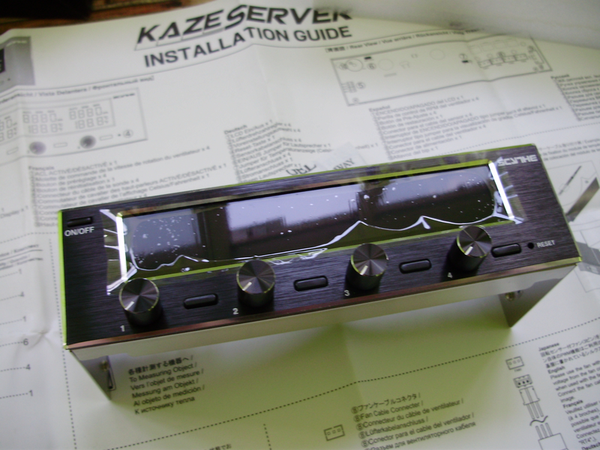
I recommend to remove it upon completion of the installation.

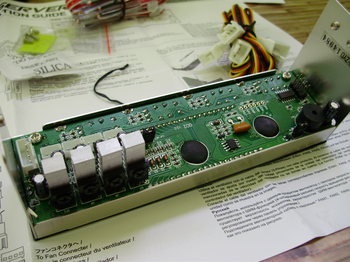
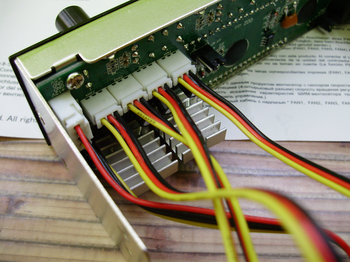
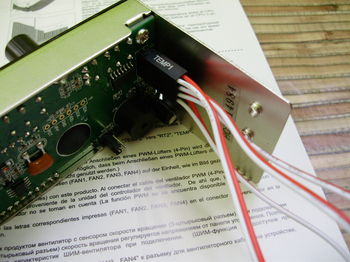
The power cable, however, as well as cooler adapters, is not standard. 4-pin power cable with end-to-end Molex. The panel is powered by 5 and 12V.
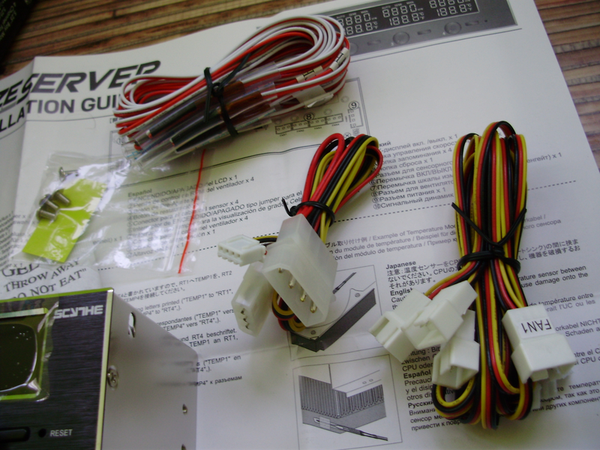
3-pin cooler cables, however, allow you to connect 4-pin coolers with PWM. Although in this case, the correct operation of such fans is not guaranteed.

A little installation advice. It is best to connect all cables BEFORE installation, otherwise you will experience noticeable difficulties when connecting cables to connectors.
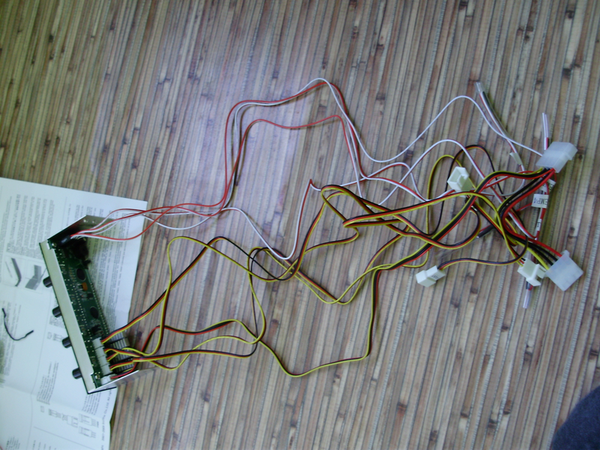
Lovers of the order of such a number of "laces" will plunge into horror and make you spend an extra half hour to lay this "farm". All the rest can simply "squeeze" everything in its place, without being distracted by the mess inside the system unit.
Sensors, for the purpose of protection, have protective caps. They are also recommended to remove immediately before installation.

2 spare ones are needed in case the main ones suffer from an unsuccessful installation under the CPU heatsink. By the way, I managed to
Once everything is connected, you can safely fasten the panel. Special difficulties at this stage should not arise.
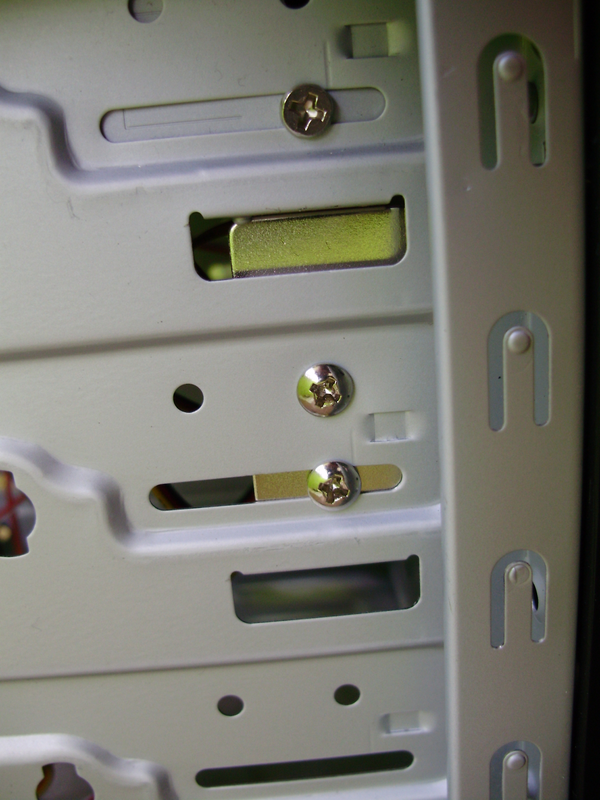
After laying the cables (see above), you can assemble the case and begin testing.
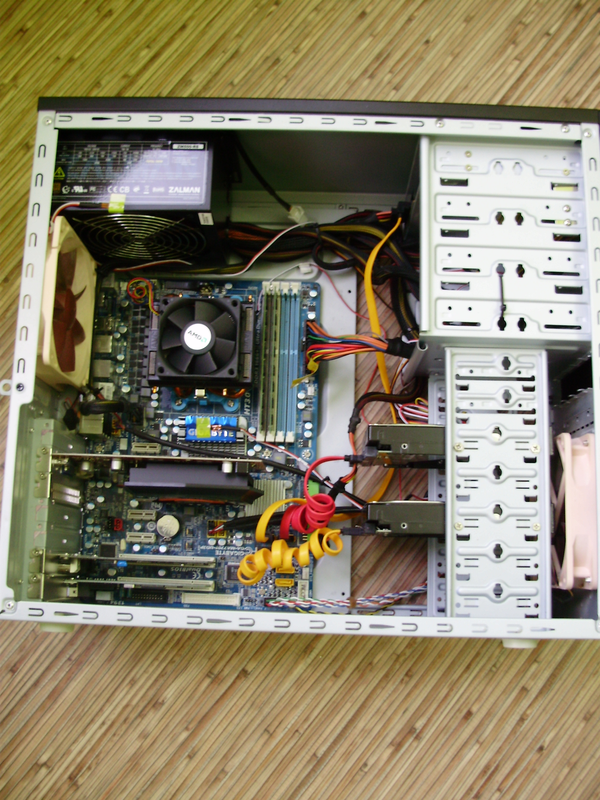
The display is pretty not bad. But he has one, I would say a significant drawback.

His viewing angles are terrible vertically. So consider the data problematic. Need to bend down. Well, or, as an option, put a sistemnik on the table.

Otherwise, the panel looks very impressive.


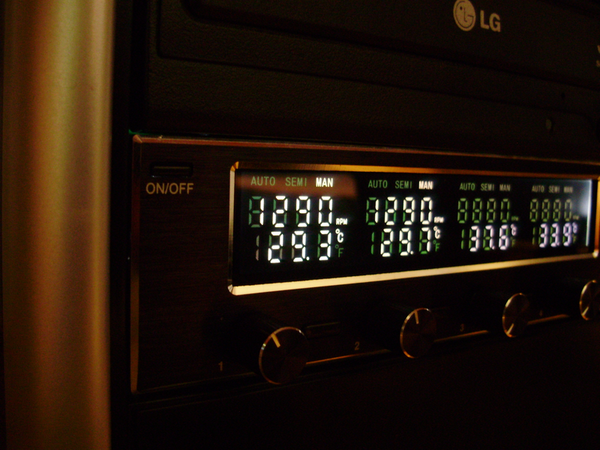
Unfortunately, photographs do not really convey the “picture”. In reality, it is more readable.
Control
On the back of the panel there are 2 jumpers - the first to select the units of measurement: Celsius or Fahrenheit, and the beeper mode. The latter, however, can be set to OFF, so that it does not annoy again
On the front panel, on the left there is a display on / off button. When watching movies, or at night, you can temporarily disable it. At the same time, the panel continues to operate according to the set parameters.
The knobs of the knobs work in a cyclic mode and have a reverse return, similar to the way the mouse wheel works.
In addition, the controller is also a mode selection button. Next to each knob is the set button for programming modes. There is a reset in the right-hand corner, it is deepened, so accidentally pressing it will not work, unless you are Freddy Krueger.
Operating modes only 3:
- AUTO: implies automatic fan on / off when the set temperature is reached;
- SEMI: the most interesting mode, allows you to set the temperature to which the cooler operates at specified turns, and when it is exceeded it starts working at full power;
- MAN: this is a fully manual speed control mode;
Work parameters
I installed the first sensor on the system HDD, opposite FAN1 (Noctua NF-S12-1200). The second - on the
Impressions
In general, the device fully justified its price. And even the viewing angles of the display did not spoil the overall impression. Beautiful, elegant design, thoughtful design of the front panel, several modes of operation, long cables, spare sensors - all this makes Scythe Kaze Server an excellent choice for those who are looking for a reasonable and elegant compromise between high performance, low temperature and low noise.
Source: https://habr.com/ru/post/118270/
All Articles